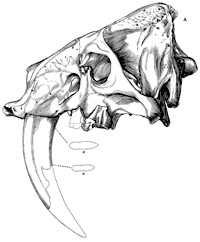Museum, University of Nebraska State

Bulletin of the University of Nebraska State Museum (1924–2023)
Date of this Version
2005
Document Type
Article
Citation
Bulletin of the University of Nebraska State Museum Volume 18
Abstract
This represents the first monographic and phylogenetic treatment of the order Lecanicephalidea. The main objective was to treat the Lecanicephalidea at the generic level, while providing information on morphology, taxonomic history, phylogenetic relationships, geographic distribution, and host associations of the group. Following an introduction to the morphology of the Lecanicephalidea, the phylogenetic placement of the group is addressed. This is followed by a review of the taxonomic history of the group and relationships within, including summaries of 29 previously used classification schemes. Despite the generic focus of this study, the taxonomic status of 137 previously recognized lecanicephalidean species was evaluated, resulting in 65 species considered to be valid, 52 species considered to be species inquirendae, 14 considered to be nomina nuda, four considered to be non-lecanicephalidean species inquirendae, and two species considered to not belong to the Lecanicephalidea. Two type species, Lecanicephalum peltatum and Polypocephalus radiatus, and Anteropora japonica are redescribed. Seven new species are described. These are: Anteropora leelongi Jensen, n. sp., Eniochobothrium euaxos Jensen, n. sp., Hornellobothrium extensivum Jensen, n. sp., Lecanicephalum coangustatum Jensen, n. sp., Polypocephalus helmuti n. sp., Tetragonocephalum passeyi Jensen, n. sp., and Tylocephalum koenneckeorum Jensen, n. sp. Five new combinations were created for lecanicephalidean species (Polypocephalus caribbensis n. comb., P. elongatus n. comb., Tetragonocephalum madhualtae n. comb., Tetragonocephalum madrassensis n. comb., and Tylocephalum rhinobatii n. comb.), and one new combination for a tetraphyllidean species previously recognized as a lecanicephalidean (Pseudanthobothrium aegyptiacus n. comb.).
Included in
Entomology Commons, Geology Commons, Geomorphology Commons, Other Ecology and Evolutionary Biology Commons, Paleobiology Commons, Paleontology Commons, Sedimentology Commons


Comments
Copyright UNSM; used by permission.